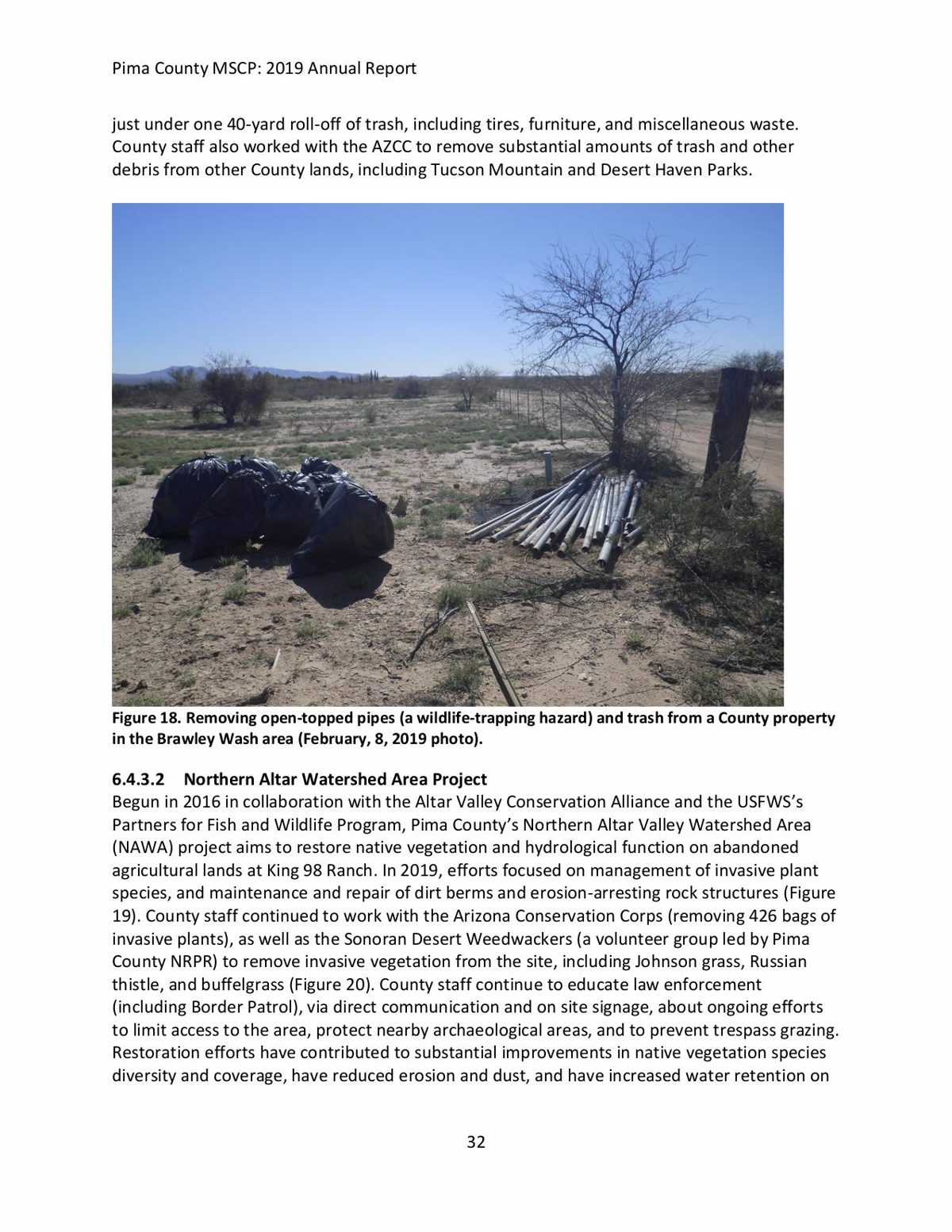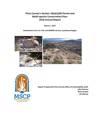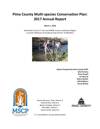Each year, since 2016, Pima County has produced a Multi-Species Conservation Plan Report - and each year the report is submitted to the U.S. Fish and Wildlife Service in support of a Pima County program that offers a streamlined process for ensuring Endangered Species Act compliance to both private and public construction and infrastructure projects.
The MSCP - part of Pima County's Sonoran Desert Conservation Plan - makes a streamlined ESA process possible thru a commitment to protect, manage, monitor and report on important habitats, landscapes and species in order to mitigate/offset impacts in other areas.
The MSCP lands have largely been acquired thru voter-approved 'Open Space' bond programs - properties include the A7 Ranch, M Diamond Ranch, Bingham Cienega, Ceinega Creek, Bar-V Ranch, Empirita Ranch and more.
These Reports generally have very little information about recreational use of Pima County Land - and they are not really 'light reading', but they cover so many interesting places, species, issues and details that I imagine most people who love the Southern Arizona's landscape would find something of interest...

A detail from the 2019 report: the photo above is clearly a 'trash cleanup' photo - but until I did some additional reading I didn't understand the tragic significance of the pipes. Open top pipes are far more than simple garbage or eye-sore - from Pima County Multi-Species Conservation Plan - 2016 Annual Report:
Metal pipes are common features of working landscapes and are used for a wide range of applications, most commonly fencing and mining claim markers. Unfortunately, most pipes are left unfilled or uncapped and therefore become traps for wildlife, especially cavity nesting birds such as ash-throated flycatchers and woodpeckers. For example, 11 open-topped vertical PVC pipes at Canoa Ranch were examined and all but one contained at least one dead bird.
In 2016, Pima County staff documented 119 open-topped pipes of 3 inches in diameter or greater. Fifty eight open-topped pipes were completely filled with material (rock and/or dirt) or removed, and 33 were temporarily capped. Capping or otherwise eliminating open-topped pipes will continue to be a priority in 2017.
Source: 2019 MSCP Annual Report Pdf - available thru Pima County's Multi-species Conservation Plan Page.
Previous Years:







